The muscular system is one of the most important systems in the human body. It allows us to move, sit or stand with proper posture, and supports many internal body functions like breathing, digestion, and circulation. This system is made up of special cells called muscle fibers, which have the ability to contract and relax. For nursing students, it is essential to understand the different types of muscles and how they work together to maintain body function and health. This knowledge is also important in identifying and caring for patients with muscle-related issues.
Types of Muscles
There are three primary types of muscle tissue, each with distinct structures and functions:
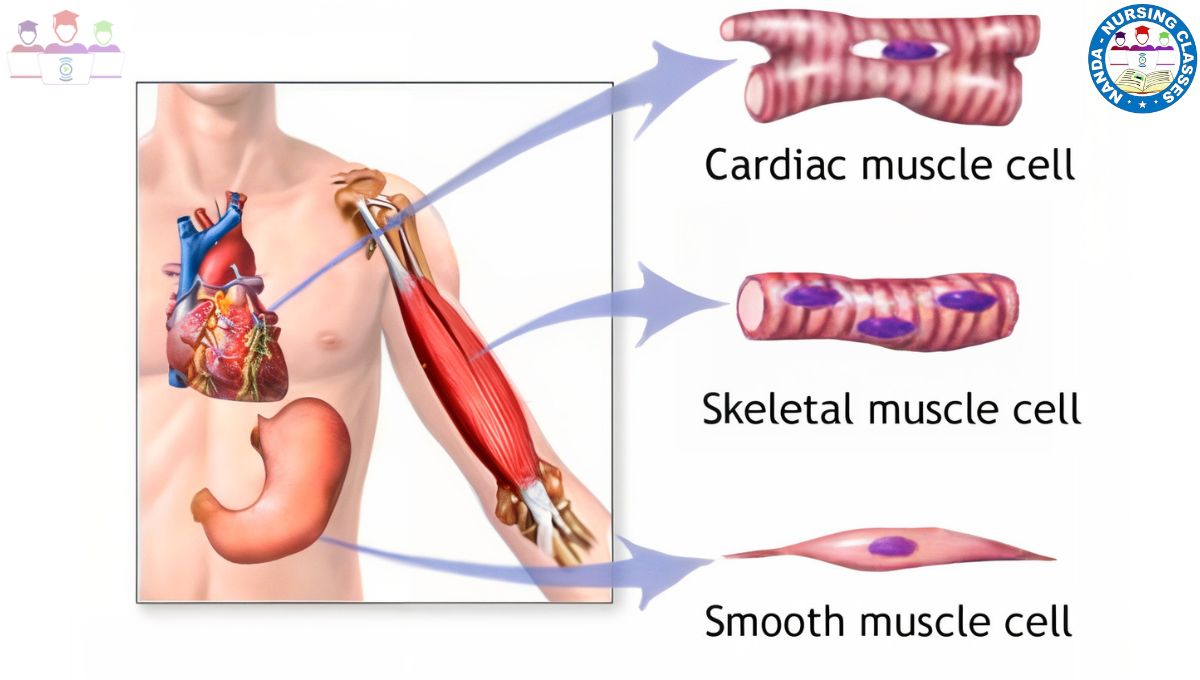
1. Cardiac Muscle (Heart Muscle)
Cardiac muscle is a special type of muscle that is found only in the heart. Unlike skeletal muscles, which we can control voluntarily (like moving our arms or legs), cardiac muscle works automatically. This means we do not have to think about making our heart beat—it is controlled by the autonomic nervous system, which manages involuntary actions in our body.
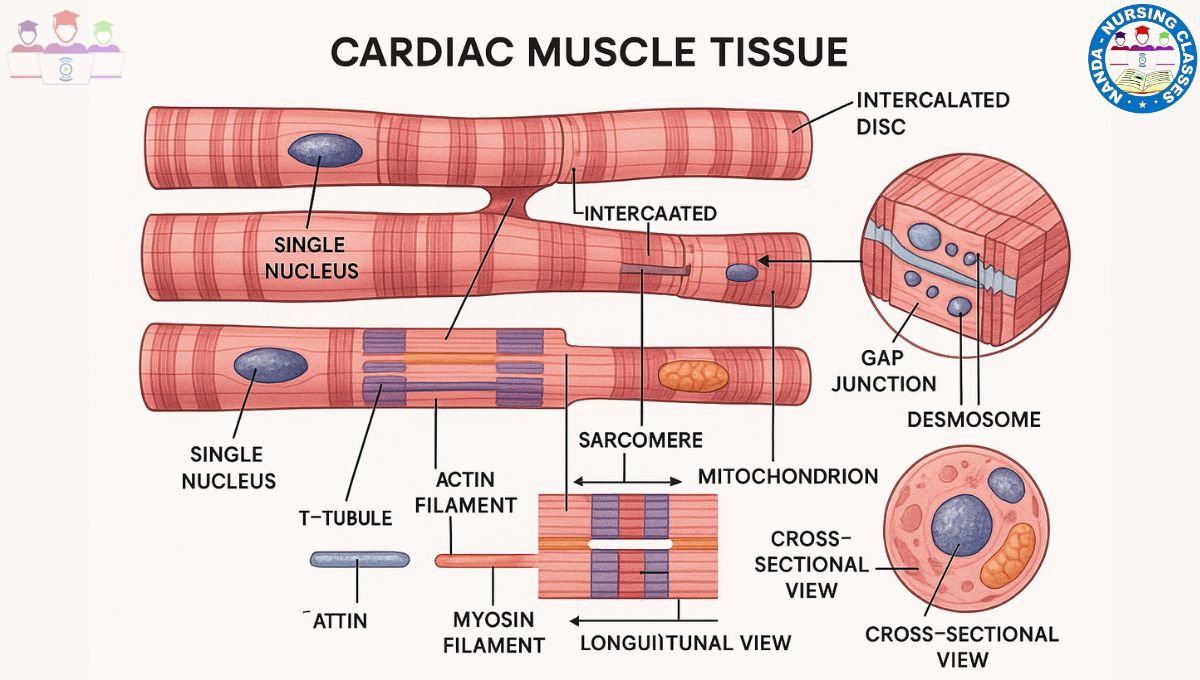
Under a microscope, cardiac muscle looks striated or striped, similar to skeletal muscle. However, what makes cardiac muscle unique is its branched structure. These branches connect with each other, allowing all the muscle cells to contract together in a coordinated way. This is very important because it ensures that the heart beats rhythmically and effectively pumps blood throughout the entire body.
2. Skeletal Muscle
Skeletal muscle is the type of muscle that is attached to bones and helps in body movement. It is called “skeletal” because it works with the skeleton to produce motion, like walking, lifting, or running.
One of the main features of skeletal muscle is that it is under voluntary control. This means we can control these muscles consciously. For example, when you decide to move your arm or leg, you are using your skeletal muscles.
When viewed under a microscope, skeletal muscles appear striated, meaning they have a striped pattern. This is due to the organized arrangement of muscle fibers.
These muscles are also known for their quick and powerful contractions, but they can get tired (fatigued) after heavy use
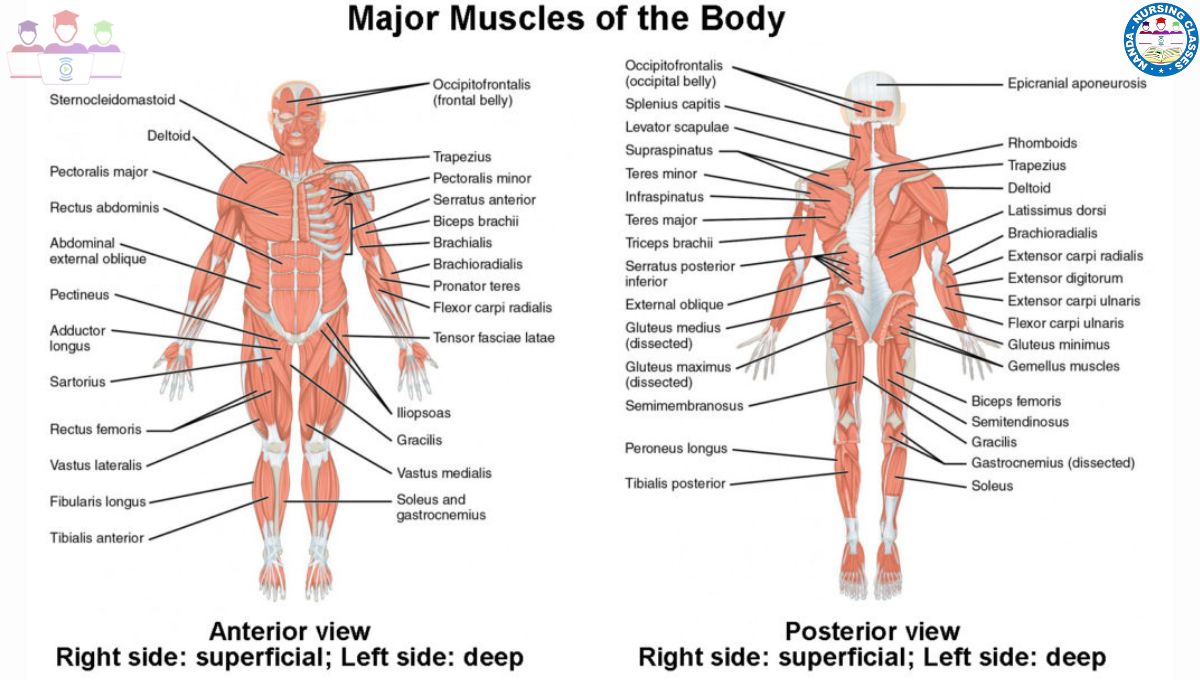
3. Smooth Muscle
Smooth muscle is a type of muscle found in the walls of internal organs such as the stomach, intestines, blood vessels, and the bladder. Unlike skeletal muscle, smooth muscle is not under voluntary control, which means we cannot consciously control its movements. Instead, it works automatically with the help of the autonomic nervous system to carry out vital bodily functions.
One of the key characteristics of smooth muscle is its non-striated appearance. When viewed under a microscope, it does not have the striped or striated pattern seen in skeletal or cardiac muscle. Instead, it appears smooth and uniform—hence the name “smooth muscle.”
Smooth muscles perform several important functions. For example, they help move food through the digestive system (a process called peristalsis), regulate the diameter of blood vessels to control blood pressure, and assist in the functioning of other internal organs.
Comparison table of the three types of muscles – Skeletal, Cardiac, and Smooth muscles
| Feature | Skeletal Muscle | Cardiac Muscle | Smooth Muscle |
| Location | Attached to bones | Found only in the heart | Walls of internal organs (e.g., intestines, blood vessels) |
| Control | Voluntary (under conscious control) | Involuntary (automatic) | Involuntary (automatic) |
| Microscopic View | Striated (striped appearance) | Striated and branched | Non-striated (smooth appearance) |
| Nucleus per Cell | Multiple nuclei per cell | One or two nuclei per cell | One nucleus per cell |
| Function | Body movement (e.g., walking, lifting) | Pumps blood throughout the body | Moves substances within organs (e.g., digestion, blood flow) |
| Fatigue | Can fatigue with overuse | Resistant to fatigue | Generally resistant to fatigue |
| Speed of Contraction | Fast, strong contractions | Moderate speed, rhythmic | Slow, sustained contractions |
Muscle Contraction
Muscle contraction is vital for movement and is initiated by signals from the nervous system. The process can be broken down into several key components:
Mechanism of Contraction
- Action Potential: The contraction begins when the nervous system sends an electrical signal, known as an action potential, to the muscle fibers.
- Calcium Release: This signal prompts the release of calcium ions from the sarcoplasmic reticulum within the muscle cell. Calcium binds to proteins on the muscle fibers, triggering contraction.
- Energy Use: Muscle fibers use ATP (adenosine triphosphate), the primary energy source in cells, to facilitate contraction and relaxation.
- Types of Contractions: There are three main types of muscle contractions:
- Isometric Contraction: The muscle generates tension without changing length. This occurs when holding a weight steady.
- Isotonic Contraction: The muscle changes length while maintaining the same tension, which includes concentric (shortening) and eccentric (lengthening) contractions.
Posture and Movement
The muscular system is crucial for maintaining posture and enabling movement:
Posture
- Definition: Posture refers to the position in which you hold your body while standing, sitting, or lying down. Good posture keeps the body aligned and minimizes the stress on muscles and joints.
- Role of Muscles: Muscles continuously adjust to maintain posture, allowing for stability whether you are static or in motion. This is particularly important in preventing injuries and ensuring efficient movement.
Movement
- Collaboration with the Skeletal System: Muscles work in conjunction with bones to allow for movement. When a muscle contracts, it pulls on a tendon, which in turn pulls on a bone, resulting in movement at the joint.
- Types of Movement: Movements can be classified as:
- Voluntary Movements: Actions you consciously control, like walking or writing.
- Involuntary Movements: Automatic responses, such as reflex actions and the rhythmic contractions of the heart.
In summary, the muscular system comprises three types of muscles — skeletal, cardiac, and smooth — each serving essential roles in movement, contraction, and posture. An understanding of these processes is fundamental for nursing students as it lays the groundwork for clinical practice and patient care related to movement disorders and musculoskeletal health.
Additional Information on the Muscular System
Properties of Muscle Tissue
Muscle tissue exhibits four essential properties that enable its function:
- Excitability: The ability to respond to stimuli, such as signals from the nervous system.
- Contractibility: The capacity to shorten and generate force.
- Extensibility: The ability to stretch without being damaged.
- Elasticity: The ability to return to its original shape after being stretched or contracted.
Muscle Groups
Muscle groups are often discussed in terms of their location and function in movement. Commonly referenced Major muscle groups of the body include:
- Upper Body Muscles: Comprise the muscles in the shoulders, arms, and chest, including the deltoid and pectoralis major.
- Lower Body Muscles: Include those in the thighs, hips, and calves, such as the quadriceps and hamstrings.
- Core Muscles: Encompass the abdominal and back muscles, essential for stabilization during movement.
Postural Control
Postural control involves a complex interaction between the muscular and nervous systems, which helps maintain balance and stability. This involves:
- Sensory Input: Information from the visual, vestibular, and proprioceptive systems helps to inform the body’s position in space.
- Central Processing: The brain integrates sensory inputs to determine how to adjust muscle activity to maintain posture.
Muscle Fatigue
Muscle fatigue can occur during prolonged activity, leading to a temporary decline in muscular performance. Factors contributing to fatigue include:
- Depletion of ATP and Other Energy Sources: Glycogen stores may diminish, especially during high-intensity exercise.
- Accumulation of Lactic Acid: This can lead to discomfort and a decrease in pH within muscles, impacting their ability to contract.
- Neurological Factors: The nervous system can adaptively reduce the signaling intensity to muscles to protect them from damage, leading to fatigue.
Rehabilitation and Muscle Health
Understanding the muscular system is vital for rehabilitation practices. Conditions such as muscle strains, sprains, and disorders like muscular dystrophy highlight the importance of muscle health. Key rehabilitation strategies include:
- Strength Training: Helps to build muscle mass and endurance.
- Stretching and Flexibility Exercises: Aids in preventing injuries and improving range of motion.
- Hydration and Nutrition: Proper intake of nutrients like protein, vitamins, and minerals is essential for muscle repair and growth.
Overall, a comprehensive understanding of the muscular system enables nursing students to deliver effective care, assess musculoskeletal conditions, and educate patients about maintaining healthy muscle function.
Important muscles in the human body or major muscle groups of the body
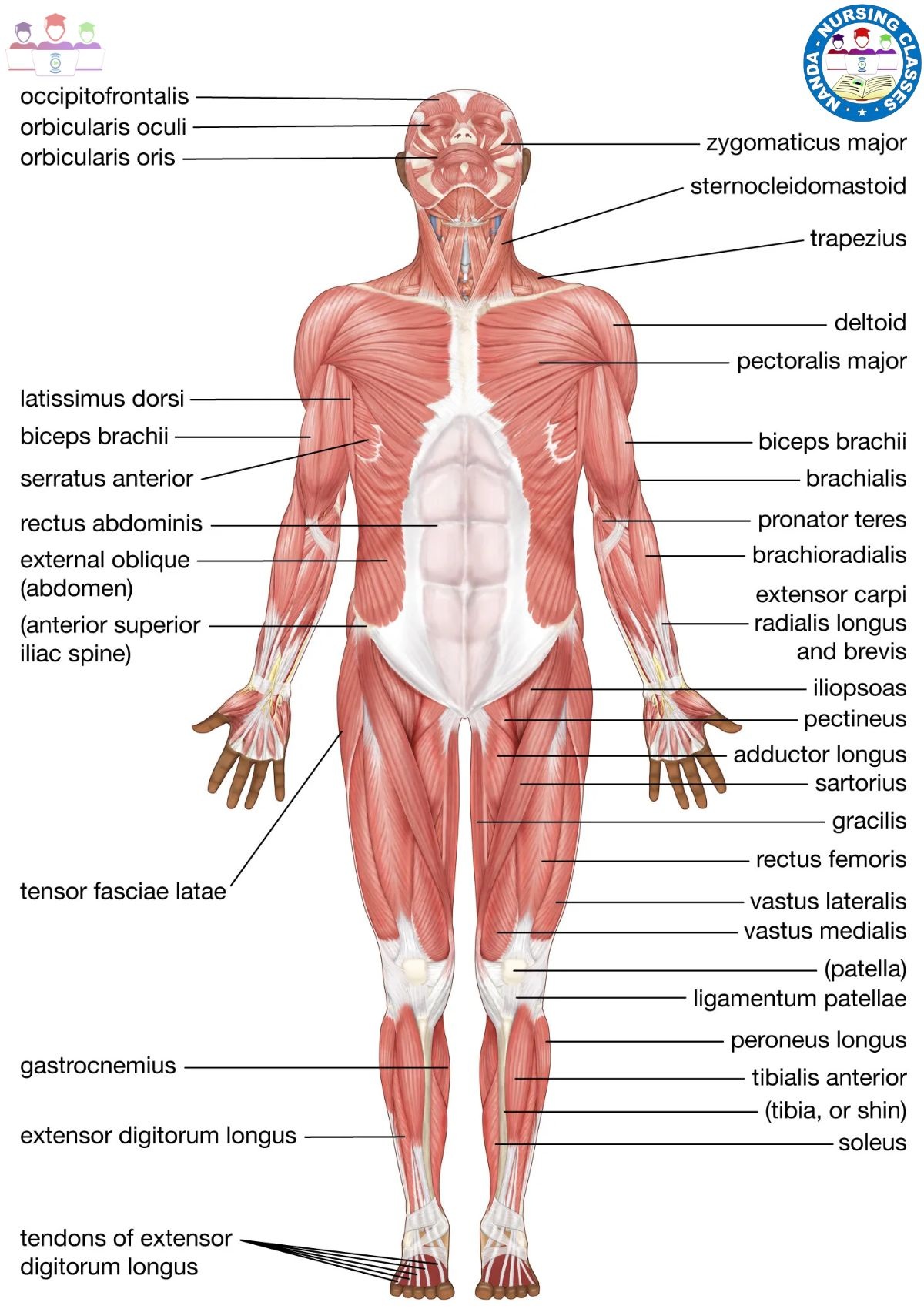
Here is a list of the most important muscles in the human body, along with their corresponding locations. This will help nursing or anatomy students identify key muscle groups and where they are found:
🧠 Head and Neck Muscles
| Muscle Name | Location |
| Frontalis | Forehead |
| Temporalis | Side of the skull (temple region) |
| Masseter | Side of the jaw (used for chewing) |
| Sternocleidomastoid | Side of neck (from sternum to skull) |
| Trapezius | Back of neck and upper back |
💪 Upper Body Muscles
| Muscle Name | Location |
| Deltoid | Shoulder |
| Pectoralis Major | Chest |
| Latissimus Dorsi | Middle and lower back |
| Biceps Brachii | Front of upper arm |
| Triceps Brachii | Back of upper arm |
| Brachialis | Beneath biceps (upper arm) |
🧍♂️ Core and Trunk Muscles
| Muscle Name | Location |
| Rectus Abdominis | “Six-pack” muscle, front of abdomen |
| External Obliques | Sides of the abdomen |
| Internal Obliques | Beneath external obliques |
| Transverse Abdominis | Deepest abdominal layer |
| Erector Spinae | Along the spine (posterior back) |
| Diaphragm | Below lungs, main muscle for breathing |
🦵 Lower Body Muscles
| Muscle Name | Location |
| Gluteus Maximus | Buttocks |
| Quadriceps (group) | Front of thigh |
| – Rectus Femoris | Middle front of thigh |
| – Vastus Lateralis | Outer thigh |
| – Vastus Medialis | Inner thigh |
| – Vastus Intermedius | Deep front thigh |
| Hamstrings (group) | Back of thigh |
| – Biceps Femoris | Lateral back of thigh |
| – Semitendinosus | Medial back of thigh |
| – Semimembranosus | Deeper medial thigh |
| Adductors (group) | Inner thigh |
| Sartorius | Long muscle running across thigh |
🦶 Leg and Foot Muscles
| Muscle Name | Location |
| Gastrocnemius | Calf muscle (posterior lower leg) |
| Soleus | Beneath gastrocnemius |
| Tibialis Anterior | Front of lower leg (shin area) |
| Peroneus (Fibularis) | Lateral side of lower leg |
| Flexor Digitorum | Bottom of foot, flexes toes |
| Extensor Digitorum | Top of foot, extends toes |
✅ Conclusion
The muscular system is an essential component of the human body, playing a critical role in enabling movement, maintaining posture, and supporting vital internal functions such as breathing, circulation, and digestion. It consists of three primary types of muscles—skeletal, cardiac, and smooth—each with unique structures, control mechanisms, and functions. Understanding the differences between these muscle types, along with the process of muscle contraction and the importance of muscular health, is fundamental for students in nursing and healthcare.
A strong grasp of the muscular system not only helps in diagnosing and managing muscular disorders but also contributes to providing effective patient education, rehabilitation, and preventative care. From everyday movements to complex physiological processes, muscles are deeply involved in almost every aspect of life.
For nursing students, this knowledge forms the foundation of many clinical practices. Whether it’s caring for patients with injuries, chronic muscle conditions, or supporting post-operative recovery, a solid understanding of the muscular system is crucial for delivering competent and compassionate healthcare.
By combining scientific knowledge with practical understanding, future nurses can play a vital role in promoting muscle health, preventing injuries, and ensuring optimal patient outcomes.
FAQs
1. What is the muscular system?
The muscular system is a group of muscles in the body that allow movement, maintain posture, and support essential bodily functions like blood circulation and digestion.
2. How many muscles are in the human body?
There are over 600 muscles in the human body, divided into three main types: skeletal, cardiac, and smooth muscles.
3. What are the three types of muscles?
-
Skeletal muscle: Voluntary, helps with body movement
-
Cardiac muscle: Involuntary, found in the heart
-
Smooth muscle: Involuntary, found in organs like intestines and blood vessels
4. How does exercise affect the muscular system?
Regular exercise strengthens skeletal muscles, improves endurance, enhances flexibility, and supports better overall health.
5. What are common muscular system disorders in the U.S.?
Some common conditions include:
-
Muscular dystrophy
-
Fibromyalgia
-
Myasthenia gravis
-
Muscle strains and sprains
6. How can I keep my muscles healthy?
-
Stay active with regular exercise
-
Eat a protein-rich, balanced diet
-
Stay hydrated
-
Get adequate rest and sleep
-
Avoid overuse or repetitive strain
7. Are muscle injuries common in sports?
Yes, muscle strains, tears, and cramps are among the most frequent sports-related injuries in the U.S., especially in high-impact sports like football, basketball, and track.
8. What kind of doctor treats muscle problems?
Depending on the condition, you may see a primary care physician, orthopedic specialist, neurologist, or physical therapist.
9. Can aging affect muscle mass?
Yes. After age 30, most people begin to lose muscle mass and strength due to a condition called sarcopenia. Regular strength training can help slow this process.
10. Is muscle pain always a sign of a serious issue?
Not always. Muscle soreness after physical activity is common and usually temporary. However, persistent or unexplained muscle pain should be checked by a healthcare provider.

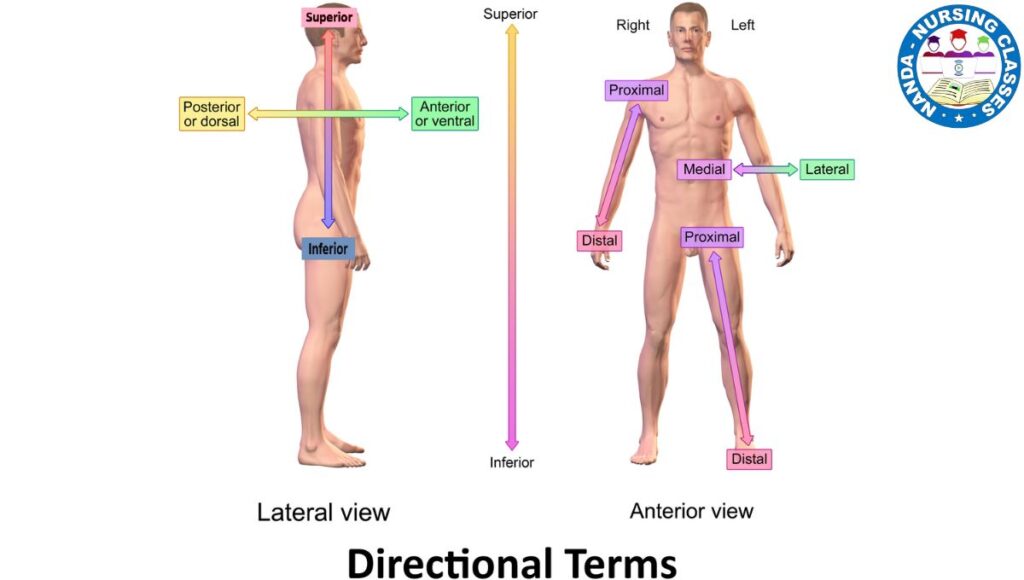
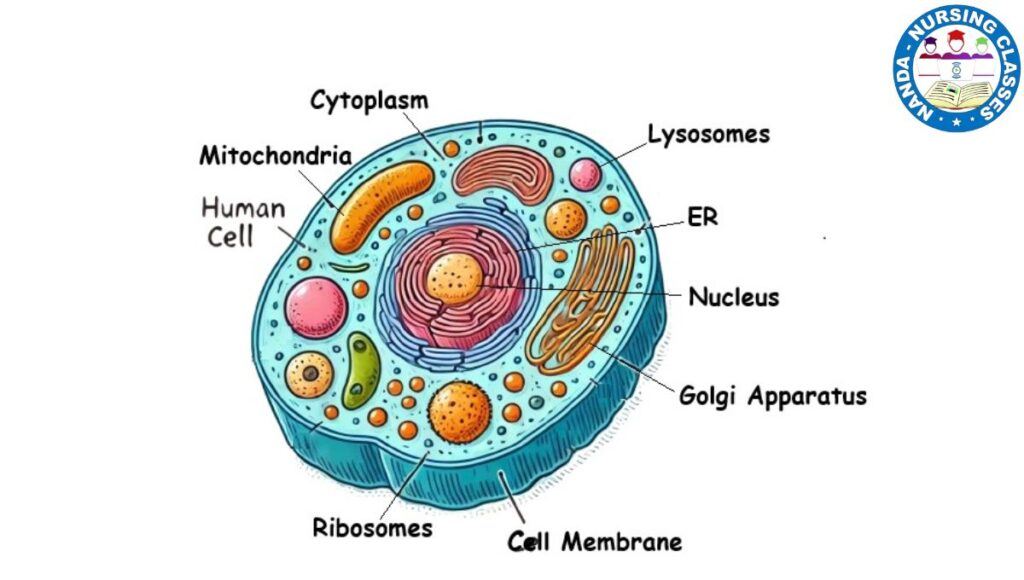
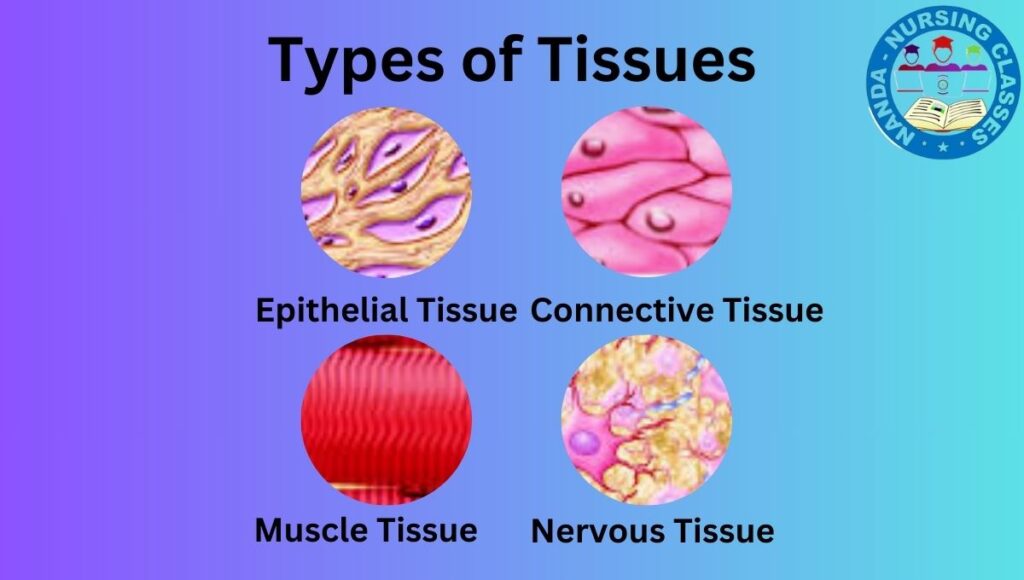

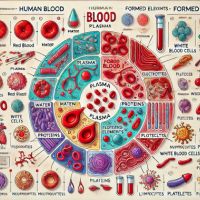
Its great as your other content : D, regards for putting up.